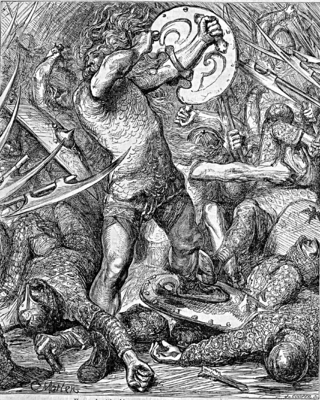
Hereward the Wake (c.1035 – c.1072) was an Anglo-Saxon nobleman and a leader of local resistance to the Norman Conquest of England. His base when he led the rebellion against the Norman rulers was the Isle of Ely, in eastern England. According to legend, he roamed the Fens, which covers parts of the modern counties of Cambridgeshire, Lincolnshire and Norfolk, and led popular opposition to William the Conqueror.
Wilfrid was an English bishop and saint. Born a Northumbrian noble, he entered religious life as a teenager and studied at Lindisfarne, at Canterbury, in Francia, and at Rome; he returned to Northumbria in about 660, and became the abbot of a newly founded monastery at Ripon. In 664 Wilfrid acted as spokesman for the Roman position at the Synod of Whitby, and became famous for his speech advocating that the Roman method for calculating the date of Easter should be adopted. His success prompted the king's son, Alhfrith, to appoint him Bishop of Northumbria. Wilfrid chose to be consecrated in Gaul because of the lack of what he considered to be validly consecrated bishops in England at that time. During Wilfrid's absence Alhfrith seems to have led an unsuccessful revolt against his father, Oswiu, leaving a question mark over Wilfrid's appointment as bishop. Before Wilfrid's return Oswiu had appointed Ceadda in his place, resulting in Wilfrid's retirement to Ripon for a few years following his arrival back in Northumbria.
Ecgfrith was the King of Deira from 664 until 670, and then King of Northumbria from 670 until his death in 685. He ruled over Northumbria when it was at the height of its power, but his reign ended with a disastrous defeat at the Battle of Nechtansmere against the Picts of Fortriu in which he lost his life.
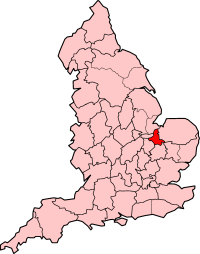
The Isle of Ely is a historic region around the city of Ely in Cambridgeshire, England. Between 1889 and 1965, it formed an administrative county.
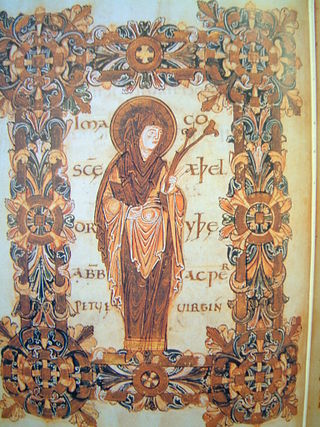
Æthelthryth was an East Anglian princess, a Fenland and Northumbrian queen and Abbess of Ely. She is an Anglo-Saxon saint, and is also known as Etheldreda or Audrey, especially in religious contexts. Her father was King Anna of East Anglia, and her siblings were Wendreda and Seaxburh of Ely, both of whom eventually retired from secular life and founded abbeys.

Chatteris is a market town and civil parish in the Fenland district of Cambridgeshire, England, situated in The Fens between Huntingdon, March and Ely. The town is in the North East Cambridgeshire parliamentary constituency.

Anna was king of East Anglia from the early 640s until his death. He was a member of the Wuffingas family, the ruling dynasty of the East Angles, and one of the three sons of Eni who ruled the kingdom of East Anglia, succeeding some time after Ecgric was killed in battle by Penda of Mercia. Anna was praised by Bede for his devotion to Christianity and was renowned for the saintliness of his family: his son Jurmin and all his daughters – Seaxburh, Æthelthryth, Æthelburh and possibly a fourth, Wihtburh – were canonised.
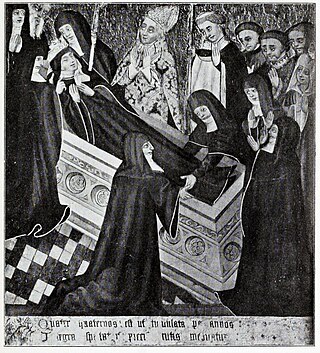
Seaxburh, also Saint Sexburga of Ely, was a Queen as well as an abbess, and is a saint of the Christian Church. She was married to King Eorcenberht of Kent.
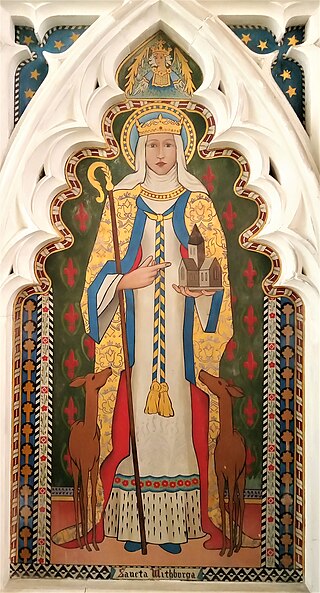
Wihtburh was an East Anglian saint, princess and abbess. According to tradition, she was the youngest daughter of Anna, king of the East Angles, but Virginia Blanton has suggested that the royal connection was probably a fabrication. One story says that the Virgin Mary sent a pair of female deer to provide milk for Wihtburh's workers during the construction of her convent at Dereham, in Norfolk. When a local official attempted to hunt down the does, he was thrown from his horse and killed.
Saint Eormenhild is a 7th-century Anglo-Saxon saint venerated in the Eastern Orthodox and Roman Catholic churches.

Aldreth is a hamlet in Cambridgeshire with about 260 residents. It is located near the larger village of Haddenham and falls under the same Parish council. Aldreth is surrounded by fenland on all sides and is close to the River Great Ouse.

Thorney Abbey, now the Church of St Mary and St Botolph, was a medieval monastic house established on the island of Thorney in The Fens of Cambridgeshire, England.

The Bishop of Ely is the ordinary of the Church of England Diocese of Ely in the Province of Canterbury. The diocese roughly covers the county of Cambridgeshire, together with a section of north-west Norfolk and has its episcopal see in the City of Ely, Isle of Ely in Cambridgeshire, where the seat is located at the Cathedral Church of the Holy Trinity. The current bishop is Stephen Conway, who signs +Stephen Elien:. The diocesan bishops resided at the Bishop's Palace, Ely until 1941; they now reside in Bishop's House, the former cathedral deanery. Conway became Bishop of Ely in 2010, translated from the Diocese of Salisbury where he was Bishop suffragan of Ramsbury.
Ælfric Cild was a wealthy Anglo-Saxon nobleman from the east Midlands, Ealdorman of Mercia between 983 and 985, and possibly brother-in-law to his predecessor Ælfhere. He was also associated with the monastic reformer Æthelwold, bishop of Winchester, he is also notable for being involved in a number of land transactions for the refounding and endowment of Peterborough Abbey, as well as with Thorney Abbey during the 970s and early 980s.

Eadnoth the Younger or Eadnoth I was a medieval monk and prelate, successively Abbot of Ramsey and Bishop of Dorchester. From a prominent family of priests in the Fens, he was related to Oswald, Bishop of Worcester, Archbishop of York and founder of Ramsey Abbey. Following in the footsteps of his illustrious kinsman, he initially became a monk at Worcester. He is found at Ramsey supervising construction works in the 980s, and around 992 actually became Abbot of Ramsey. As abbot, he founded two daughter houses in what is now Cambridgeshire, namely, a monastery at St Ives and a nunnery at Chatteris. At some point between 1007 and 1009, he became Bishop of Dorchester, a see that encompassed much of the eastern Danelaw. He died at the Battle of Assandun in 1016, fighting Cnut the Great.

The Liber Eliensis is a 12th-century English chronicle and history, written in Latin. Composed in three books, it was written at Ely Abbey on the island of Ely in the fenlands of eastern Cambridgeshire. Ely Abbey became the cathedral of a newly formed bishopric in 1109. Traditionally the author of the anonymous work has been given as Richard or Thomas, two monks at Ely, one of whom, Richard, has been identified with an official of the monastery, but some historians hold that neither Richard nor Thomas was the author.
Æthelstan Mannessune was a landowner and monastic patron in late 10th-century Anglo-Saxon England, coming from a family of secularised priests. Remembered by Ely Abbey as an enemy, he and his family endowed Ramsey Abbey and allegedly provided it with a piece of the True Cross. His children became important in their own right, one of them, Eadnoth, becoming Abbot of Ramsey and Bishop of Dorchester, and another becoming abbess of Chatteris nunnery.
Ælfwaru was an Anglo-Saxon noblewoman, who bequeathed her lands to churches such as Ely, and Ramsey. Chroniclers, writing in the 12th century, transcribed such bequests, from the original cyrographs. Ælfwaru's cyrograph has not survived. Ælfwaru's father, Æthelstan Mannessune, had two sons: Eadnoth, and Godric; and two daughters: Ælfwaru, and Ælfwyn.
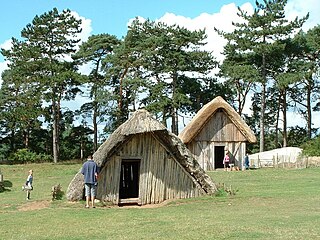
Cratendune is the name of the lost village reported in the Liber Eliensis, the history of the abbey, then Ely Cathedral, compiled towards the end of the 12th century, as the 500th anniversary of the traditional founding date drew near. As no direction is indicated in Liber Eliensis, a number of archaeological sites are therefore candidates for this lost village.

Saints Tancred, Torthred, and Tova were three Anglo-Saxon siblings who were saints, hermits and martyrs of the ninth century. Their feast day was celebrated on 30 September at Thorney and Deeping.














